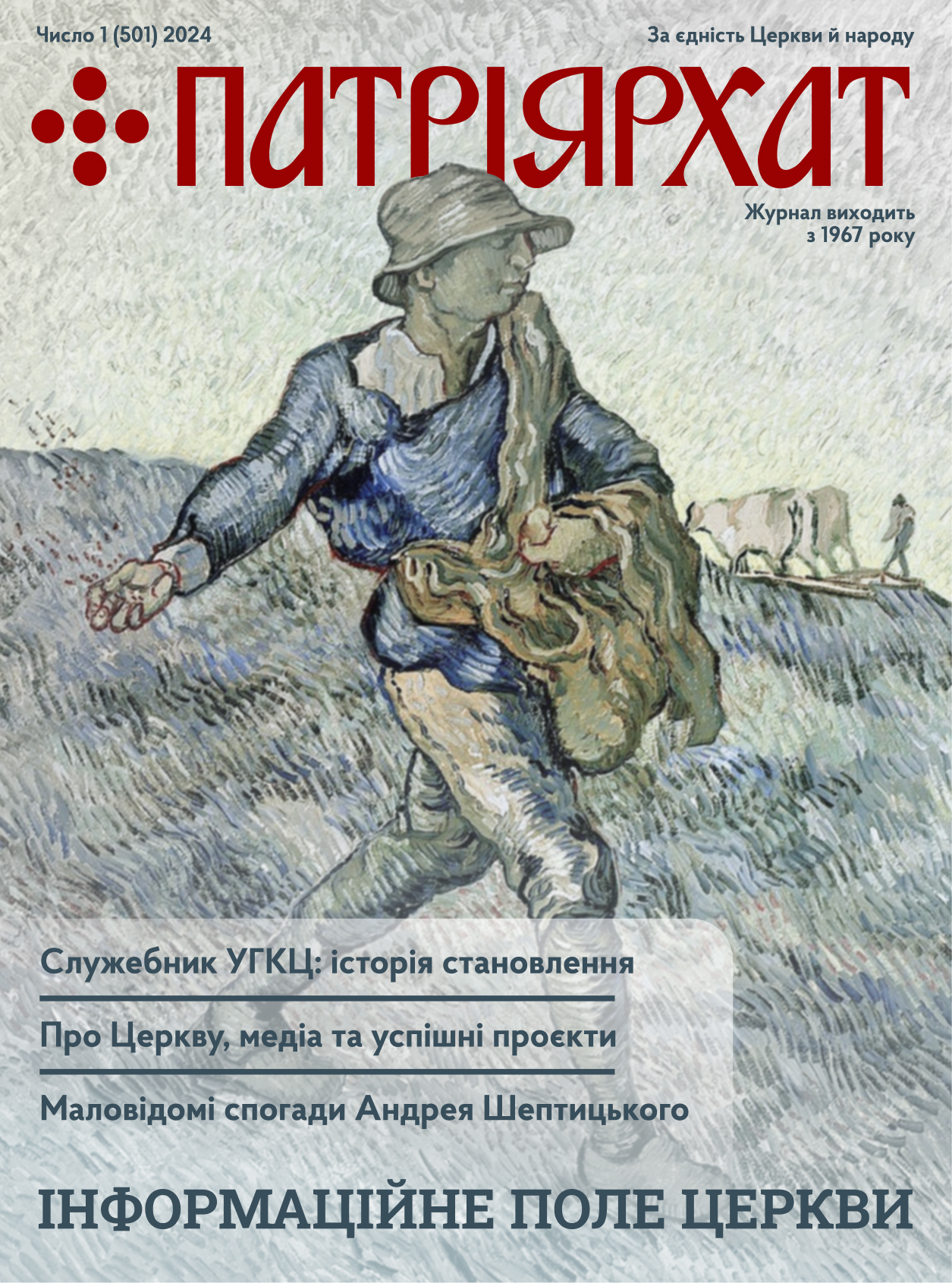George A. Maloney, S.J.
On March 24, 1980, Pope John Paul II opened the extraordinary synod of the Ukrainian Catholic bishops in Rome. Present were Cardinal Josyf Slipyj and 14 Ukrainian bishops. Also present were Archbishop Achille Silvestrini, Secretary of the Council of the Public Affairs of the Church, and Archbishop Mario Brini, Secretary of the S. Congregation for the Eastern Churches. The purpose, in the words of the Pontiff, was to propose candidates for the nomination of one to give assistance to Major-Archbishop Slipyj and then to succeed him.
Last year the Pope personally appointed a simple Ukrainian priest who had been serving as a chaplain to a girls’ junior college in Pennsylvania to be the Metropolitan of Philadelphia, the most Reverend Myroslav Ivan Lubachivsky. Now the Pope has appointed him as Slipyj’s successor.
Hidden from the eyes of the non-Ukrainian world by this seemingly benign gesture on the part of the Roman Pontiff was the long struggle led by Major-Archbishop Slipyj for the Ukrainian Catholics in the diaspora to obtain either their own patriarch or some legitimate exercise of autonomy, as had been promised to them when their Orthodox ancestors had united with Rome in the Synod of Brest-Litovsk in 1596.
Cardinal Slipyj on September 23, 1971, at a session of the World Synod of Bishops in Rome, said:
Ukrainian Catholics have sacrificed rivers of blood and mountains of bodies because of their loyalty to the Church. And they are still suffering severe persecution. What is worse, there is nobody to defend them… Because of church diplomacy we are impeded…the Ukrainians who have suffered so much and so long as martyrs and confessors are ignored as inconvenient witnesses of past evils. We have become an obstacle to church diplomacy.
A suffering church
Since 1946 the Ukrainian Church in the U.S.S.R Ukraine had seen a brutal massacre in the U.S.S.R. of its glorious Church of five million and a total dissolution of what 375 years of fidelity to the Roman See had built up. One million Ukrainian Catholics live in the diaspora and are riddled with dissension and confusion. In America and Canada a slow process of latinization and usurpation of the rights and traditions of these people developed, especially climaxing in 1929 with the reinforcement of the decree, «Cum Data Fuerit» which forbade a married clergy. Each bishop was directly answerable to the Oriental Congregation and lost any sense of a collegial, synodal Church.
This was until Major-Archbishop Slipyj, after 18 years of intense hard-labor imprisonment in Siberia, was released. On December 23, 1963 he was named Major-Archbishop of Lvow which title gave him according to the traditions of his church and the Eastern Canon Law Motu Proprio, Cleri Sanctitati (1957), the equivalent rights of a Catholic Eastern patriarch. This was confirmed also by the Decree on the Eastern Catholic Churches of Vatican II (Orientalium Ecclesiarum), #10. In the union-synod with Rome of Brest-Litovsk (1596), Rome promised to respect the ancient rights of the Kiev-Halych Metropolia, which within the bosom of Eastern Orthodoxy had operated as an autonomous Church, equal to a patriarchate without enjoying, however, the title. Thus The Ukrainian Catholics had been promised by Rome a synodal administration with autonomous rights to legislate in regard to rituals, church discipline, a married clergy and with the synod’s right to choose its own bishops.
Vatican II with its decree on the Eastern Churches solemnly agreed by the vote of 2,600 bishops to restore such ancient rights if for any reason they had been lost or taken away. «We solemnly declare that the Eastern Catholic Patriarchates fully enjoy the right and are in duty bound to rule themselves. Each should do so according to the proper and individual proceedings in their traditions (#5).» It went on to declare: «The patriarchs (including a major-archbishop) with their synods are the highest authority for ail business of the patriarchate, not excepting the right of setting up new diocese…» (#9).
A Move Toward Autonomy
Cardinal Slipyj sought to act on his ancient traditions, reinforced by the existing Eastern Code of Canon Law and Vatican II. He traveled abroad and gathered the straying and disheartened Ukrainian Catholics into a national Church. He ordained married men to the priesthood. And, then, much to the chagrin of the Secretary of State at the time, Cardinal Villot, he summoned all of the Ukrainian bishops to eight synods, which Villot insisted, in no way could he conceived of as true synods but they merely were «conferences.»
He made an official plea to Pope VI in 1969 that the Pope recognize the Ukrainian Catholic Church as a Patriarchate. On July 7, 1971 Pope Paul VI answered emphatically NO! The Pope clearly saw that granting a patriarchate to the Ukrainian Church would displease the Soviet authorities and the Russian Orthodox Church dignitaries. The Vatican’s Ostpolitik could never tolerate any encouragement to the underground Ukrainian Church in the U.S.S.R. for the Soviets have long feared the nationalism of the Ukrainians.
If the Vatican emissaries, as Archbishop Agostino Casaroli, will gain anything from the Soviets, it will, the Ukrainians feel, be at the price of not only continuing the suppression of the Ukrainian Catholic Church in the U.S.S.R. but of stalemating its growth in the free world.
This can be seen not only in the Vatican’s refusal to allow the Ukrainian bishops under their Major-Archbishop Slipyj to call whenever and wherever they wished an authentic synod to legislate in the approved areas of concern granted to them already by Eastern Canon Law, but also in its denial of any Ukrainian synod’s ability to offer three names for the selection of new hierarchs, ultimately chosen by the Pontiff.
In March of 1070 a declaration. «Apostolica Sedes» was issued stating that every Catholic patriarchate and major-archiepiscopate had the right to submit to the Pope three names of candidates for a vacancy in such sees. Yet the Pope appointed again and again, especially in the appointments of Bishops John Stock, Basil Losten and Myroslav Ivan Lubachivsky, bishops without the slightest consultation of Cardinal Slipyj and his bishops gathered in synod.
The Vatican refused to allow Cardinal Slipyj to travel to Winnipeg in 1971 to attend the 5th Ukrainian Synod. According to the report of Newsweek Magazine, in Rome, «…the venerable cardinal is treated like a virtual prisoner of the Vatican.»
False Ecumenism
Autonomy as desired by the Ukrainian Catholics is not a movement to remove themselves from the guidance of the Pope. Three hundred and seventy five years of fidelity amidst much persecution is proof enough. They only ask what has been so eloquently promised to them by Rome in the past and what has been so dramatically declared as restored to them by Eastern Canon Law and Vatican Council II.
The Orthodox sadly see the Vatican publishing beautiful testimonies of its respect for the Eastern traditions, but in reality they see the Eastern Catholics in union already with Rome living only in an external shell of a cultic rite that has lost all possibilities of inner self growth. Pope Paul VI, on the occasion of the canonization of 40 English martyrs (1970), longingly held out to Anglicans the possibility of a union with Rome that would allow freedom to retain their own liturgical rituals, ecclesiastical discipline and church order. But this promise was also made to the Orthodox at Brest in 1596 and the present Ukrainian Catholics have been merely asking that charity and sincerity begin with the Eastern children within the Catholic Church.
The Ukrainian Catholics have the promise of the Pope of a Major-Archbishop to succeed the present one, His Beatitude Josyf Slipyj. But the Pope’s strong action in calling an extraordinary synod and appointing a person completely unknown to succeed the dynamic present Metropolitan Slipyj is the Pontiff’s strongest statement that there will be no autonomous, synodal administration for the Ukrainian Bishops.
With what painful pangs did Major-Archbishop Slipyj hear the Pope’s final words addressed to the gathered Ukrainian bishops:
Now all of you, venerable Brothers, return to your pastoral cares, happy to have been able to contribute in such a tangible way to a measure which constitutes for your Church an effective protection and a singular honor.
A valiant warrior had come to the end of the battle. Cardinal Slipyj had suffered as a living martyr for his Church and out of love for the Pope of Rome. Millions of other Ukrainians had endured martyrdom and exile while even now untold numbers worship in an underground Church in the Ukraine, all to be faithful to their religious traditions and to the Holy Pontiff.
One way to liquidate a Church of the Eastern traditions is to impose upon their hierarchy and faithful bungling tactics on the part of Roman officials who exalt the Latin Rite as the superior Rite and set the stage for mass defections from the Catholic Church to Orthodoxy by ignoring their promises to preserve the ancient Eastern traditions. It is estimated that 75% of the present Orthodox Church of America is made up of former Eastern Catholics. The entire Carpatho-Russian Orthodox Church was once Eastern Catholics.
Another way to liquidate a Church or at least to turn it into a beautiful museum piece to be looked at but that in itself breathes no fire of inner life is for the Pope of Rome to hand-pick Eastern bishops that will not desire to rock the boat by insisting as the «enfant terrible,» Cardinal Slipyj, on their Church’s legitimate rights. We eagerly wait for the new Coadjutor to prove whether he is worthy successor of Cardinal Slipyj or whether he has been another Vatican creation to foster expedient politics in place of the true Gospel of Jesus Christ.
*Reprinted from quarterly magazine No. 2, DIAKONIA

